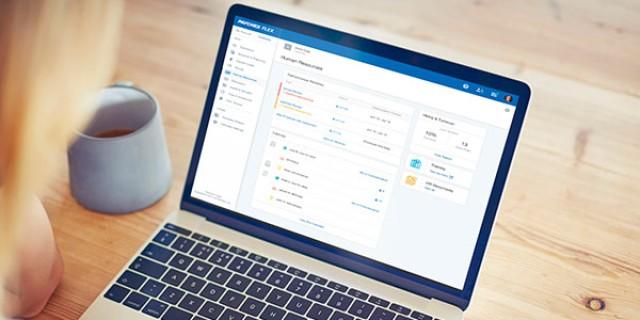- Payroll
- Article
- 6 min. Read
- Last Updated: 04/22/2025
How To Pay 1099 Workers

Table of Contents
The contingent workforce, also sometimes referred to as the gig economy, includes millions of Americans who work as independent contractors, sometimes called 1099 workers. Business owners have embraced the shift toward flexible work arrangements for many reasons, including reduced costs, broader labor pools, and changing market conditions.
If your company uses independent contractors, you know that understanding how to classify and pay these workers correctly can be challenging. Mistakes like inaccurate worker classification, insufficient documentation, and compliance with applicable tax laws can result in steep fines and penalties.
To minimize these risks and boost efficiency, you need reliable payment systems that help you build positive, long-term relationships with talented independent contractors.
Understanding 1099 Workers and Their Classification
Depending on your company's needs, you may hire full-time, part-time, temporary, and other types of employees. Employees may be protected by federal, state, and local employment laws concerning minimum wage, overtime, tax withholdings, and recordkeeping.
A 1099 worker, by contrast, is considered an independent contractor rather than an employee of your company. You do not have to withhold taxes for them, and they generally have more control over their schedule, the work they accept, and the nature of the working relationship.
When you pay each of these workers, they must be correctly classified as either an employee or independent contractor based on the requirements under the applicable law as it relates to the structure of their jobs. Unfortunately, the line between a 1099 worker and a W2 employee isn't always clearly defined under all applicable laws. To help businesses make the distinction, the Department of Labor established a 6-factor economic reality test to determine whether a worker is economically dependent on the employer or whether they operate independently. The 6 factors are:
- Opportunity for profit or loss: Can the worker make a profit by taking on more work, negotiating prices, or marketing? Can they experience a financial loss?
- Investments by the worker and the business: Does the worker invest their own time, money, and skill in ensuring the success of the business? Do they purchase their own tools or technology, rent office space, or market their services?
- Permanence of the work relationship: Does the worker provide services on a project basis or deliver a fixed amount of work over a set period? Can the worker take on projects for other companies?
- Nature and degree of control over their work: What degree of control does the individual have over how, where, and when they work? Can they maintain their own schedule, hire their own workers, and operate without direct supervision?
- Importance of the work to the business: Is the work central to the company's primary business, or is it an ancillary business process such as HR, marketing, or accounting?
- Skill and initiative: Is the worker responsible for their own training and skill development? Do they use their skills and initiative to secure work and grow the business?
A majority of "yes" answers to these questions may indicate that a worker is an independent contractor under the Fair Labor Standards Act and should be paid as a 1099 worker. The IRS also offers guidelines for distinguishing 1099 workers from employees for tax purposes. These guidelines include behavioral, financial, and relationship factors that should be considered.
Common Worker Misclassification Pitfalls
Worker classification can be nuanced, and sometimes, you may have to make a judgment call based on the DOL and IRS guidelines or other applicable law. As you classify each worker, beware of potential pitfalls like the following:
- Treating contractors like employees: Avoid treating 1099 workers like employees by doing things like dictating when, where, and how they perform work.
- Providing equipment and tools: Supplying all necessary equipment, workspace, and supplies to contractors can suggest an employment relationship.
- Exclusivity and control: Preventing contractors from having other clients may indicate employee status.
- Misinterpreting industry norms: In some industries, it's easy to assume that certain roles can always be classified as contractors. This may not be the case, and these roles should still be examined using applicable tests.
- Relying on written agreements: A written contract does not always indicate a worker’s classification as an independent contractor. The DOL and IRS tests should still be applied.
Penalties and Risks for Misclassifying Workers Independent Contractors
Incorrectly classifying a worker as an independent contractor carries significant penalties because classification is linked to employment law protections and tax responsibility and, businesses should ensure accurate classification to help them avoid such penalties and risks.
Misclassifying a worker as an independent contractor could result in:
- Financial penalties: Both federal and state agencies may impose fines for unpaid taxes, wages, and benefits.
- Back tax liability: As an employer, your business would be responsible for any unpaid payroll taxes, Social Security, and Medicare contributions that result from incorrect classification.
- Wage and hour claims: Businesses may be legally liable for overtime, minimum wage violations, and missed breaks for misclassified workers.
- Legal costs: Legal costs may include audits, investigations, and costs to defend against lawsuits.
- Benefits eligibility claims: The business may be required to cover the cost of healthcare, retirement plans, and other employee benefits in the event of a classification error.
- Damage to company reputation: Routinely misclassifying workers could damage the company's reputation and recruiting.
Determining Pay for 1099 Workers
Once you have determined the correct classification for an independent contractor, the next step is to create an appropriate pay structure. The pay structure you choose may depend on the nature and scope of the work, the contractor's preferences, and the terms of the agreement. Common pay structures include:
- Hourly rates: If a service is time-based, such as a virtual assistant service, you may agree with the contractor on an hourly rate. The difference between an employee paid on an hourly basis and an independent contractor being paid by the hour is that employees typically doesn't set their own schedule or determine the rate they receive. An independent contractor does both of those things and has the flexibility to change the rate or end the agreement.
- Project fees: Some contractors prefer to charge a flat project fee for a defined deliverable. This is a common pay structure for freelance writers, website developers, and graphic designers. In these scenarios, the contractor works with you to determine the project scope, set expectations, and negotiate a fee. Pay depends on the completion of the project, not the time spent completing the project.
- Milestone payments: For longer projects, consider a milestone-based pay structure that releases funds upon completion of specific project phases. For example, this structure might work best for a construction project or software development initiative.
- Retainer: A retainer agreement allows you to reserve space in a contractor's schedule each month for recurring work. For example, you might create a marketing retainer with predetermined deliverables such as monthly blog posts or social media management.
Handling Payment Terms and Contractor Invoices
Whatever structure you choose, document the payment structure and fees in a written contract with clearly stated terms. Many independent contractors will ask you to sign their contract agreements, but it is also wise to create your own contract. In addition to pay structure and fees, the agreement should detail the timeline of invoices for contractors, payment methods, tax requirements, and procedures to follow in the event of potential scope changes or project cancellation.
Contracts should also cover terms and conditions such as a statement of work ownership, and approval processes. Well-drafted payment provisions help to protect both parties financially and help substantiate the nature of the relationship if worker's classification is brought into question. Business owners should consult with legal counsel when developing contracts.
How To Pay a 1099 Worker: Key Steps
The process for paying independent contractors differs from your standard employee payroll process. After you have correctly classified a worker as a contractor and established payment terms, you may need to take the following steps:
- Obtain Form W-9 from the contractor. Use Form W-9 for 1099 contractors rather than Form W-2, which is used for employees of your business. You will need the contractor's name, address, and Taxpayer Identification Number or social security number to report payments made to them over the year.
- Set up payments according to the schedule and terms in the contract. The contract should already document payment amounts, timelines, and conditions. Use this information to set up and remit payments to the contractor.
- Prepare and send Form 1099-NEC. Complete Form 1099-NEC for all contractors who receive more than $600 in payments from you over the year. Send copies to the contractor and the IRS by January 31st to avoid penalties.
Methods for Paying 1099 Workers
Choosing the proper method for paying independent contractors can streamline your accounting processes and ensure proper documentation for tax purposes. Here are three options for making those payments smooth and stress-free while meeting all the requirements.
Traditional Payment Methods
Checks and ACH deposits are widely used and give you a tangible record of payments. Wire transfers may also be an option when you need to get money to your contractor immediately. However, that convenience comes with higher fees that might not make sense for regular payments.
Automated Systems
Some payroll systems can help you automate your contractor payments alongside your employee payroll, taking the administrative work off your plate. These systems typically generate and distribute 1099 forms at tax time, keep payment records, and let you set different payment schedules for various contractors.
Online Payment Platforms
Online payment services let you send money with just a few clicks, usually with lower fees than wire transfers. Some platforms also offer features like multiple currencies and compliance support. These digital options integrate with financial management tools and provide immediate payment confirmation.
Benefits of Using Payroll Software To Pay 1099 Workers
Managing independent contractor payments with payroll software often makes it easier to pay 1099 workers alongside your regular payroll employees, especially if you work with large contractor teams or remote workers. Here's how these systems can help streamline your contractor payment processes:
- Increased accuracy: Reduce the risk of errors by maintaining accurate records for each contractor all in one place.
- Reduced administrative burden: Eliminate time-consuming manual processes and track payments in one central system.
- Streamlined record-keeping: Maintain detailed payment histories, contracts, and tax documentation in a single secure location.
- Tax compliance: Automatically create, distribute, and file 1099 forms with the IRS, reducing year-end tax stress and minimizing compliance errors.
- Flexible payment methods: Offer various payment options.
- Integration with other systems: Synchronize contractor payment data with your accounting and HR software to maintain accurate records.
- Reporting and analytics: Generate insights on contractor spending across departments, projects, or time periods to manage your contractor budget more efficiently.
Streamline Your 1099 Worker Payment Process
Paying 1099 contractors doesn't have to be complicated. By establishing clear payment terms, choosing the correct payment methods, and using a payroll software platform like Paychex, you can reduce administrative headaches and ensure compliance with tax regulations.


Tags







